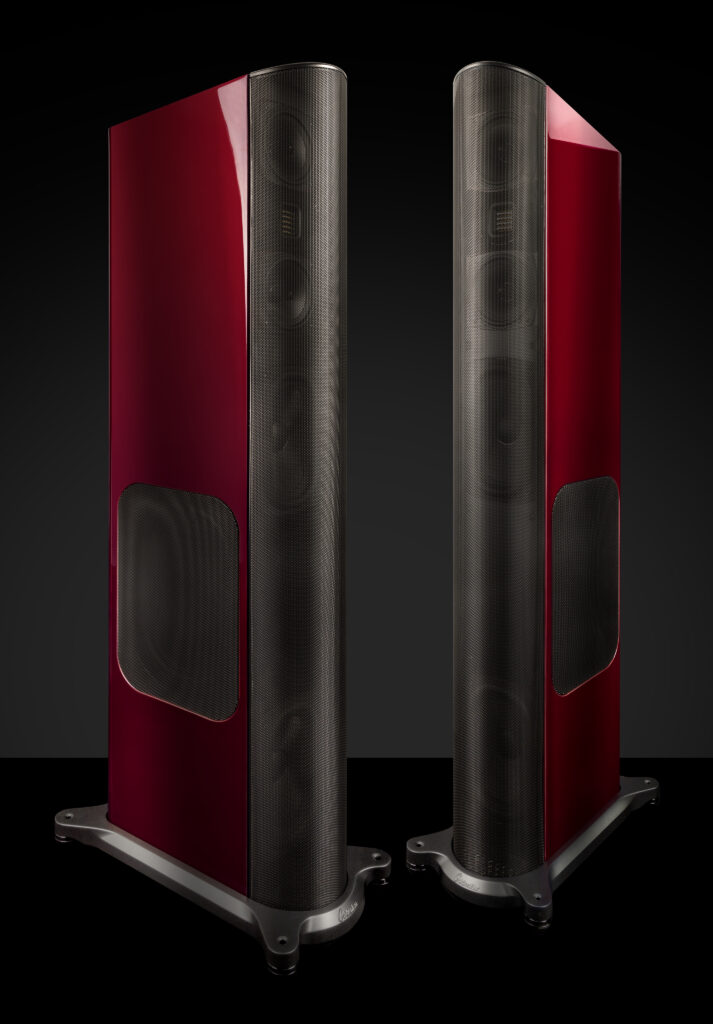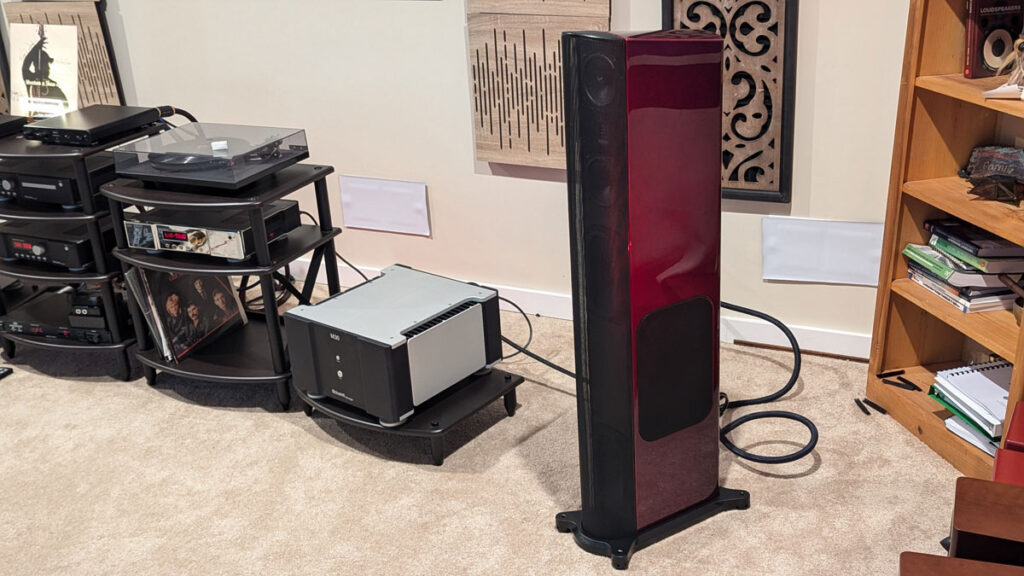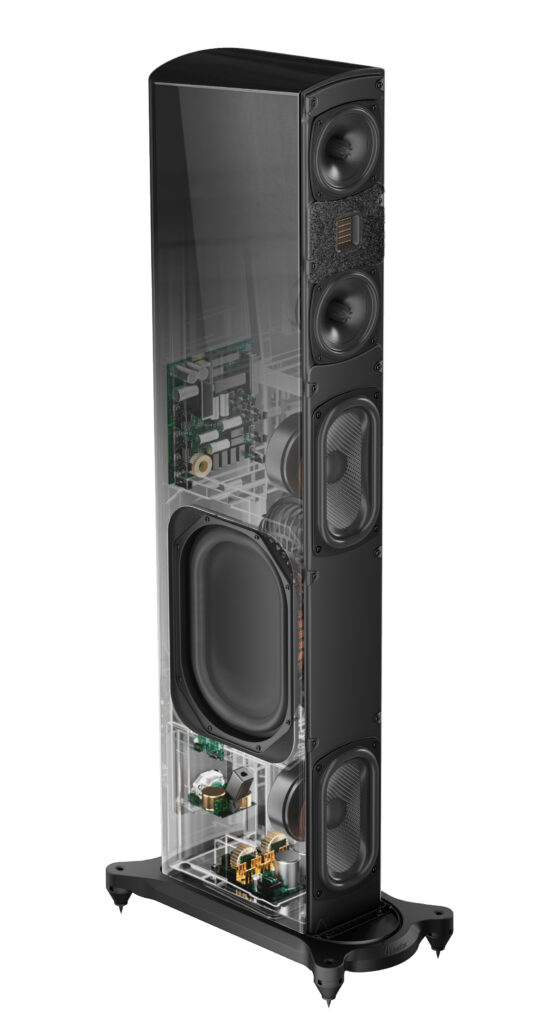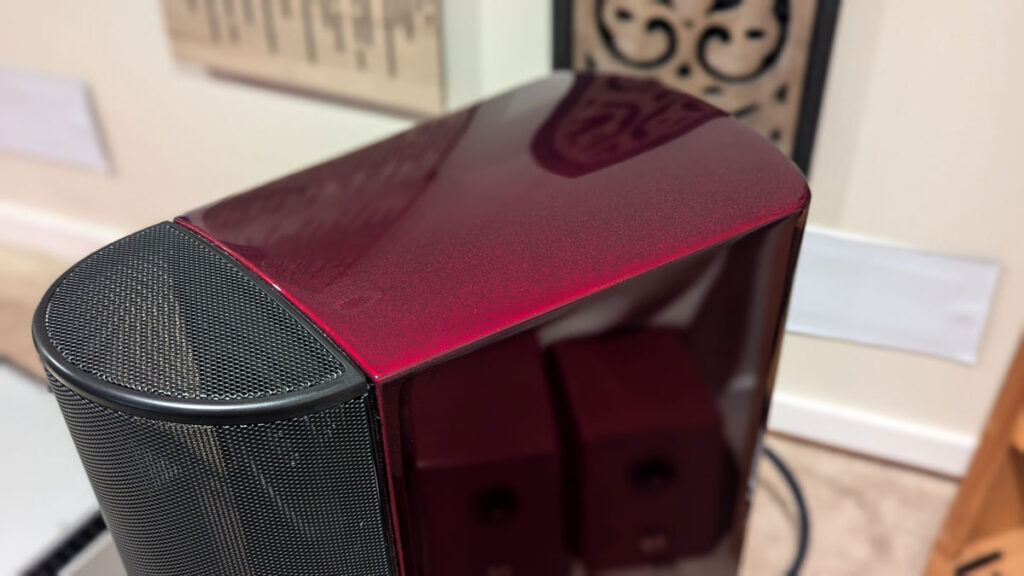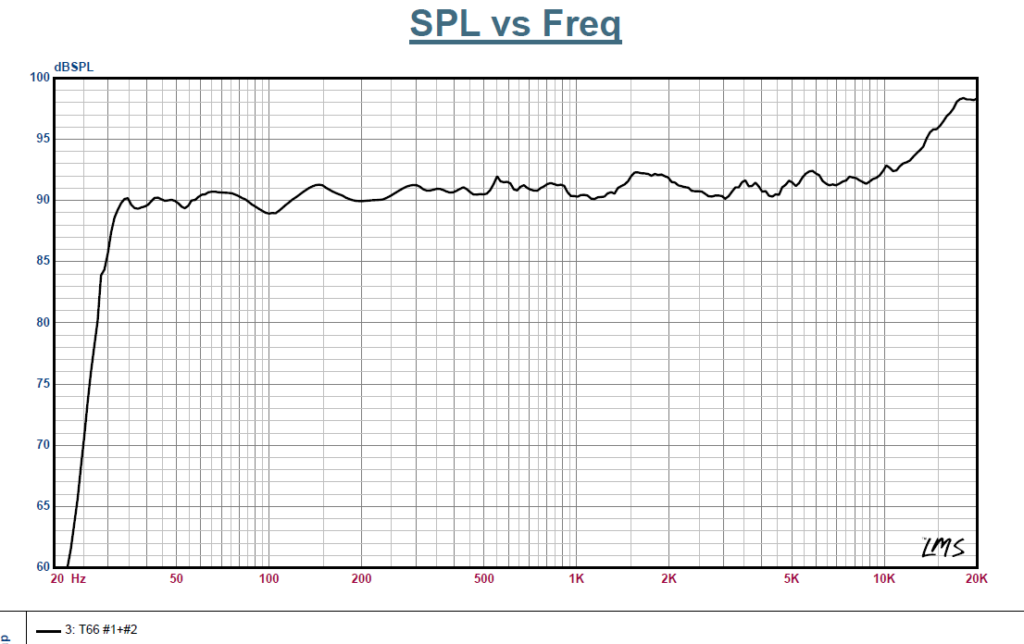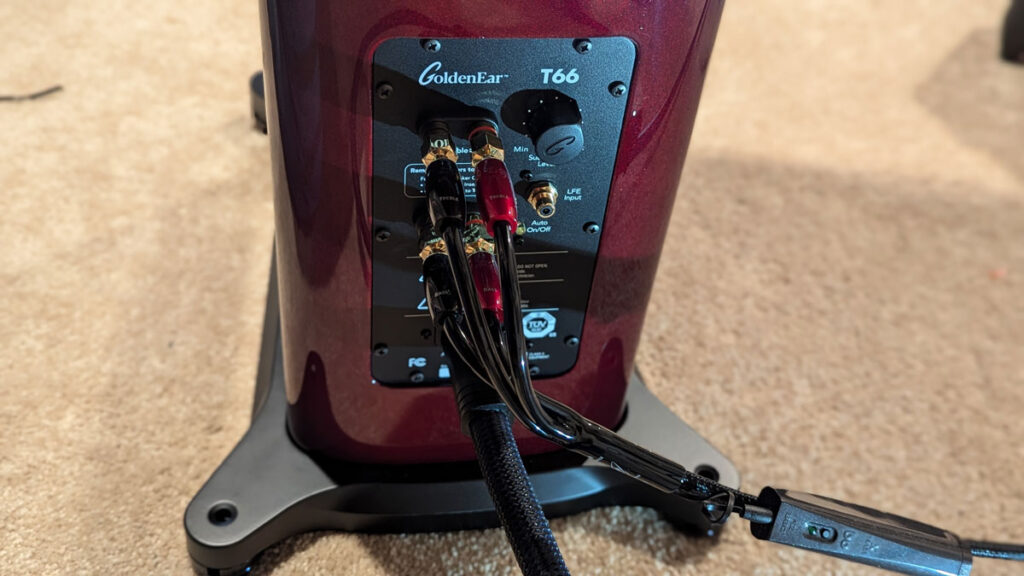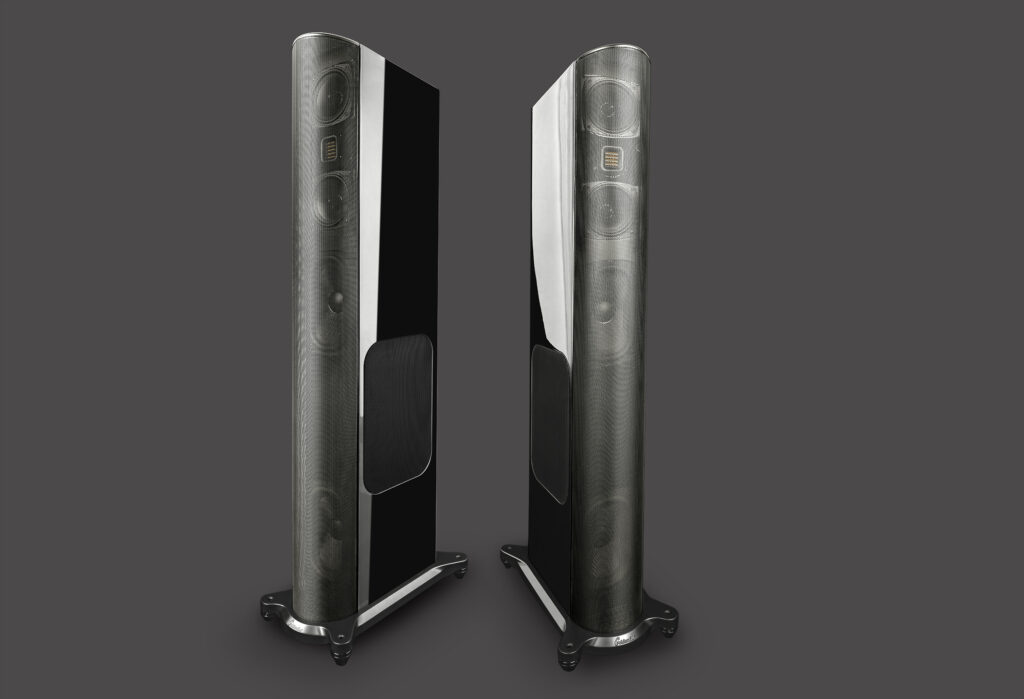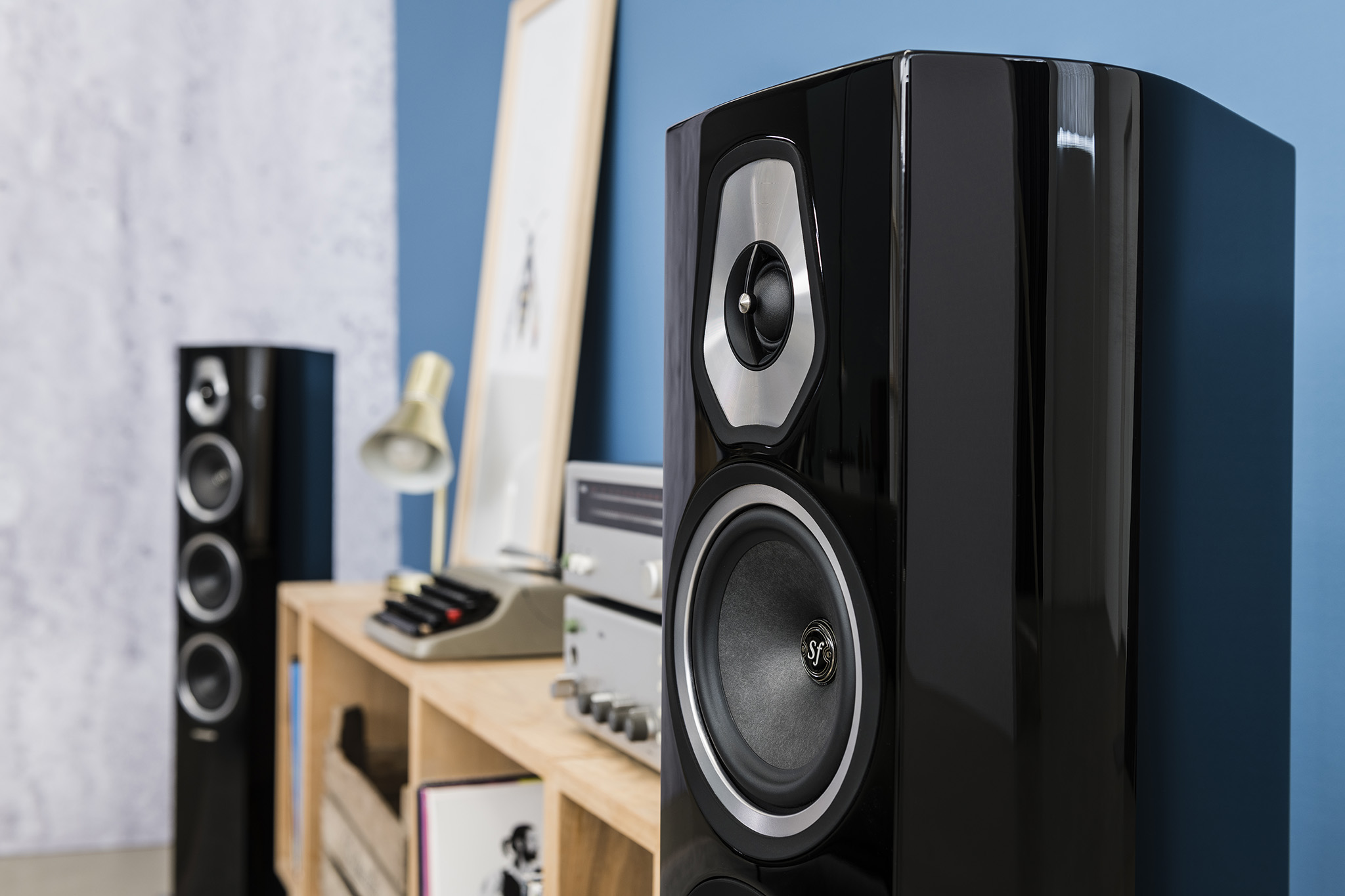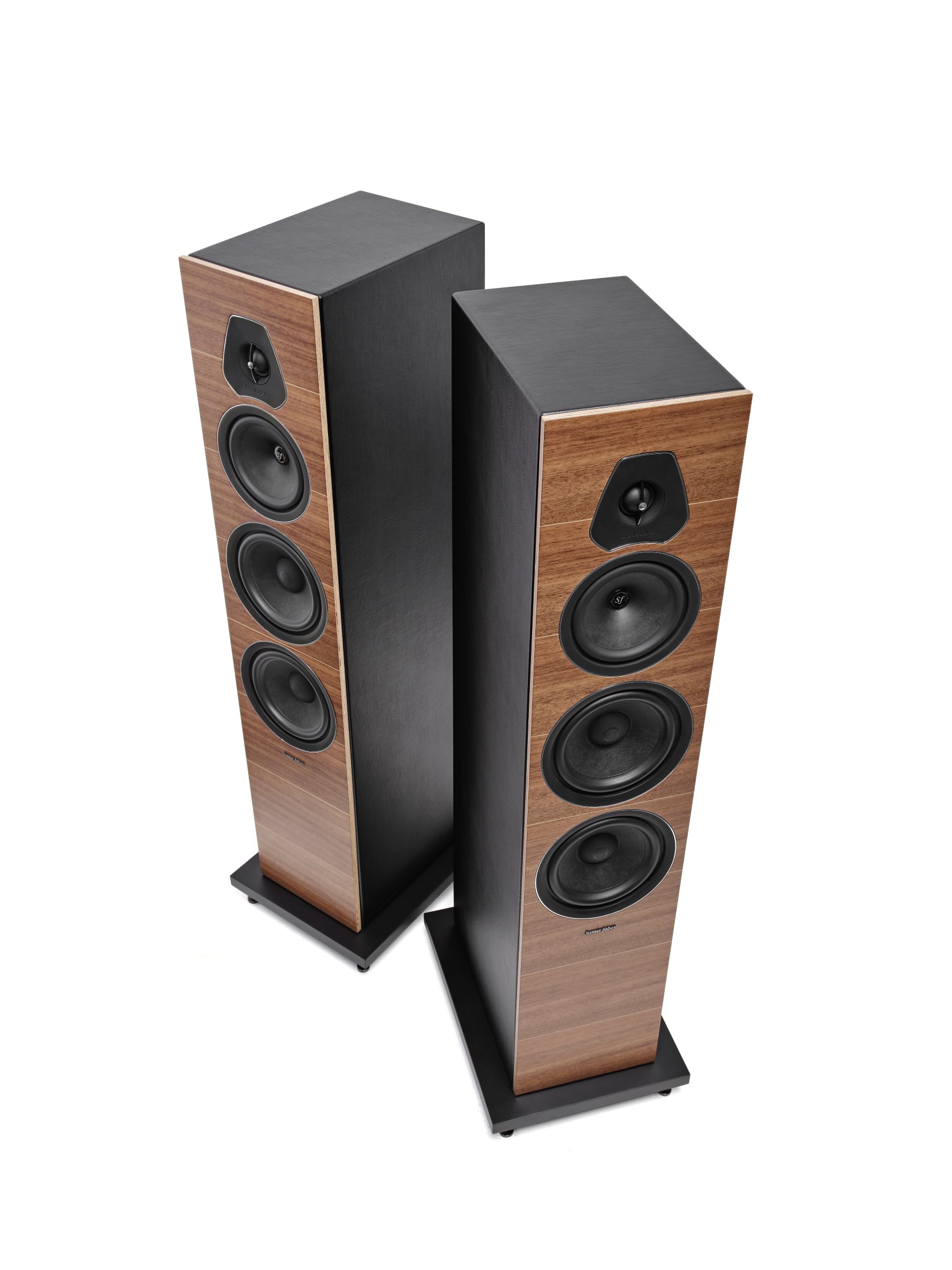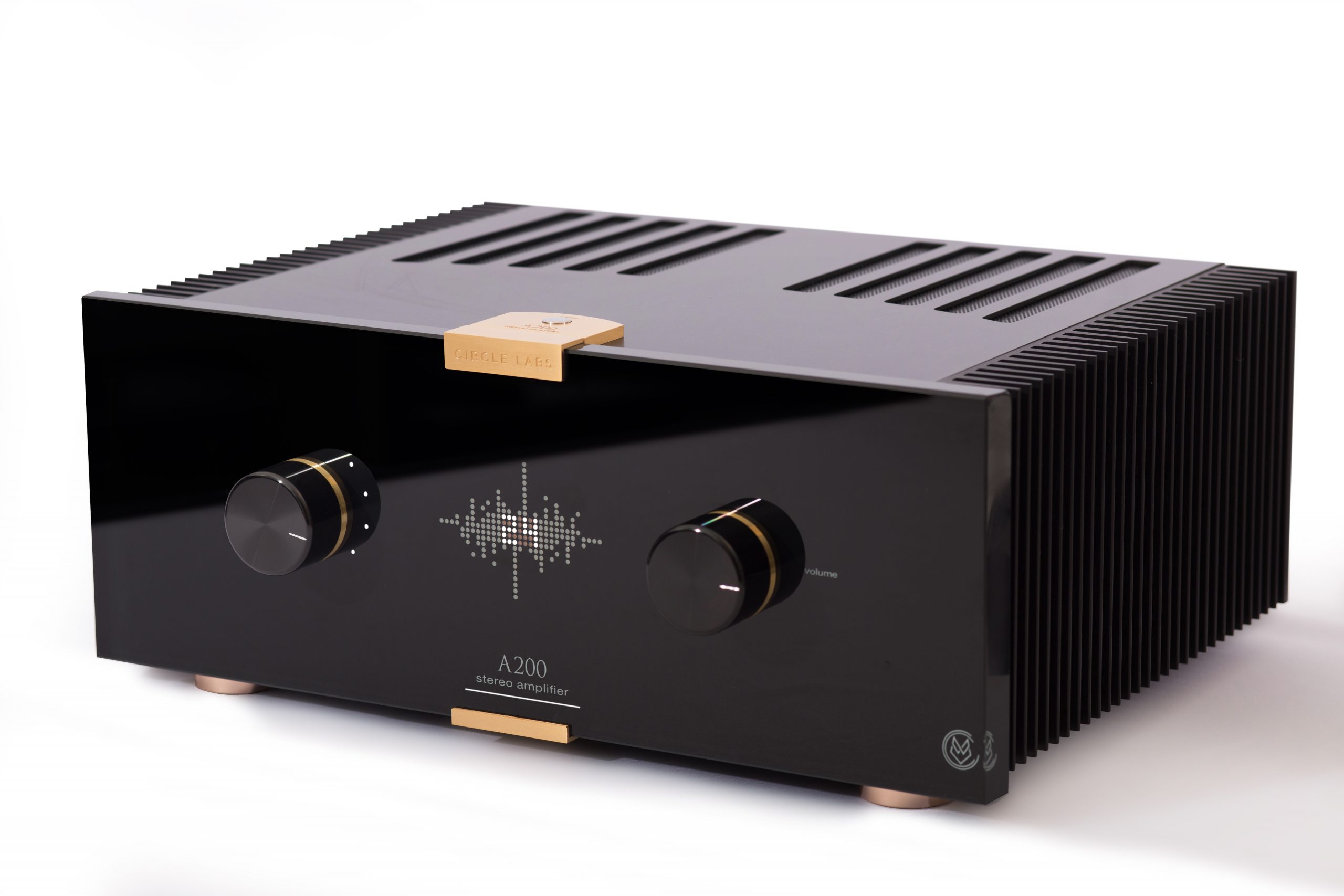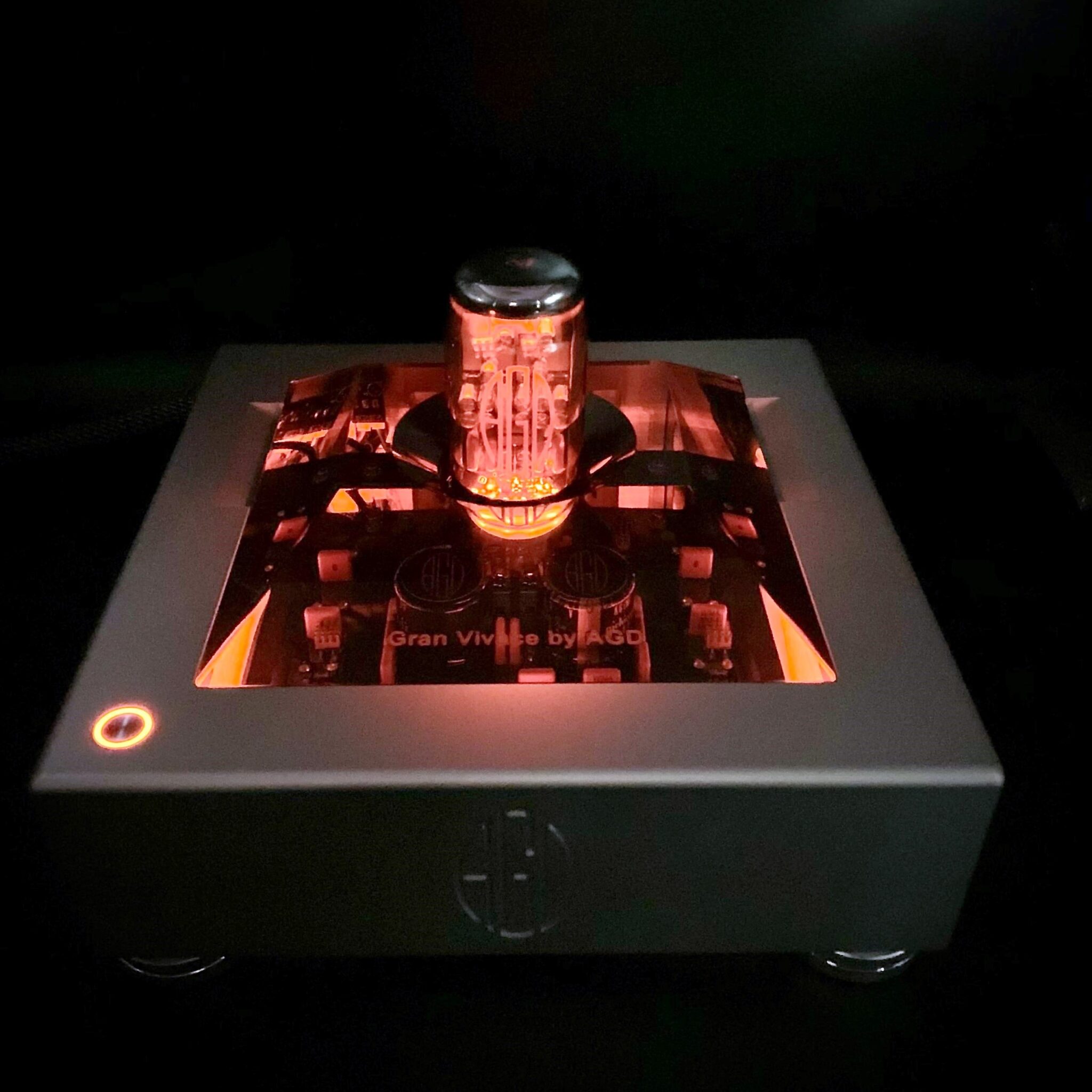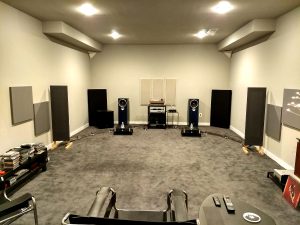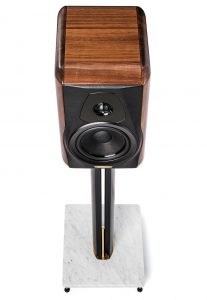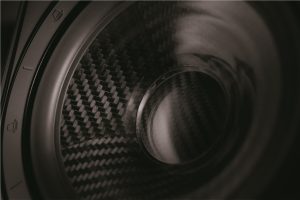This is not 1999 anymore. Flash forward 25 years and most loudspeakers from any reputable manufacturer are far more than a few speaker drivers in a cabinet with basic filtering. The finest loudspeaker companies are leveraging advancements in materials, complex software, precision manufacturing practices, Digital Signal Processing (DSP), finite element analysis (FEA), and a whole cornucopia of other modern design tools to take their products into the future. While these technologies are not always leveraged by every loudspeaker manufacturer, GoldenEar has leveraged them in aplomb in their next generation loudspeaker: The T66.
GoldenEar, a loudspeaker company originally founded by legendary loudspeaker guru Sandy Gross, was acquired by the Quest Group (AudioQuest) in 2020. After a smooth transition The Quest Group pooled together their large pool of engineering resources to continue the work that built GoldenEar's reputation for affordable yet outstanding audiophile loudspeakers. GoldenEar's, dare I say golden, reputation has already been cemented by their flagship Triton Reference loudspeaker. In the spirit of "if it ain't broke, don't fix it" GoldenEar launched the T-Series, which currently consists solely of the T66, with many of the same design elements that brought the Triton Reference to the spotlight. GoldenEar did not simply rest on the laurels of the Triton Reference, the T66 has also been designed with further refinements that represent forward progress.
The GoldenEar T66 installed in Michael Zisserson's reference system
Building out the T66 Loudspeaker
The T66 comes with an extensive driver array. Two advanced four and one-half inch midbass drivers flank GoldenEar's Reference Air Motion Tweeter (AMT). AMTs have become all the rage these days with the cool kids, but many do not perform all that much better than well engineered dome tweeters. In fact, with the unique design challenges presented by AMT drivers, it is far easier to have a miss with AMT tweeters than it is to have a success. Yet we are talking about GoldenEar and the T66's AMT is more than your typical "accordion." Instead of using the common practice of multiple small magnets to achieve the moving force of the AMT, GoldenEar's reference AMT in the T66 uses a single oversized high-gauss magnet. This configuration allows the Reference AMT in the T66 to provide more transparent transients, and improves power compression for high-powered listening sessions.
GoldenEar uses oval, and quadratic shaped low frequency drivers to maintain a slim profile while maximizing cabinet real-estate. Large drivers are required to produce low frequencies at any reasonable volume, but often make loudspeakers appear bloated and antiquated to the eye. Even though oval drivers are used by multiple manufacturers (and in the automotive world) I think it is important to put some perspective to these unique drivers. For this, GoldenEar's Senior Acoustic Engineer, Martyn Miller, and The Quest Group's Senior Director of Engineering, Garth Powell, were kind enough to provide a little peek under the curtain. Sd is a property of a loudspeaker drivers that indicates the effective radiating surface. For low frequencies, the bigger the better. The five-inch by nine-inch subwoofers in the T66 have an Sd of 166.91 square centimeters. That measurement makes this oblong fellow able to move significantly more air than a traditional six and one-half inch woofer, but not quite as much as an eight inch woofer. When these woofers work in conjunction with the eight by twelve-inch passive radiators, the T66 is capable of high quality, high output, in-room bass frequency response down to 29Hz.
An X-ray view of the GoldenEar T66 Loudspeaker
The T66's extensive technology does not stop there. The T66 utilizes a DSP controlled 500-watt amplifier for the subwoofers that works in conjunction with GoldenEar's most advanced passive crossover yet. The passive crossover sends the right frequencies to the midbass and AMT drivers. Many may be thinking: "Ok, so the T66 is just another powered tower…" However, "just another powered tower" is an oversimplification as the advanced DSP not only integrates the bass response coming in from the T66's woofer section of the dual binding posts, but adjusts the subwoofers performance curves in conjunction with the volume to provide seamless room integration of the bass. For those new to the hobby, in-room bass performance is one of the largest challenges to high-fidelity sound you will deal with.
The devil is always hiding in the details and GoldenEar has the details covered. High quality internal wiring, crossover parts, binding posts, and cabinet construction were not left on the chopping block. Quality throughout a loudspeaker is extremely important because loudspeakers suffer the most out of any audio component when corners are cut. I see it too often: A company will brag about one amazing technological aspect they have developed, yet the loudspeaker still falls flat due to missed details. I was happy to hear, both on paper and in its performance, that the T66 does not suffer from ANY design deficits at their per-pair price of $6900 in gloss black, or $7200 in Santa Barbara Red. The pair I received were in Santa Barbara Red and the finish is gorgeous. Well worth the extra $300. The remaining tale of the tape for the T66 can be found on their website. No need to repeat already available information when there is so much more to be excited about in the GoldenEar T66 Loudspeaker!
The gorgeous Santa Barbara Red glowed in Michael Zisserson's listening space
Setting up and exploring the T66 Loudspeaker in my system
After unboxing the 60-pound T66, I would recommend using two people in soft gloves to place them in their final home. That is unless you have arms like a Gibbon as I do, then you can handle them just fine solo. Assembly of the feet to the solid metal base was straight-forward. Stephen Mejias at the Quest Group was kind enough to send along a pair of Robin Hood loudspeaker cables and Monsoon power cords which I utilized while listening. When compared with my custom loudspeaker cables, I did prefer the Robin Hood with the T66. The bi-wire pair of the Robin Hood cables had seemed to be a great match with my Bricasti Design M30 amplifiers. The subwoofer amplifier in the T66 contains an RCA LFE input for home theater use. While it is not necessary to use the LFE input, it is required for the user to affix speaker cables to the woofer input of the bi-wire binding post pair. When an LFE input is used with the T66, it will sum with the speaker-level input.
Using my trusty Sheffield/A2TB Test Disc in my Bricasti M19 transport, I began set up of the T66 with the subwoofer control set to 12 o'clock. The T66 required more toe-in than my reference loudspeaker, the PSB Synchrony T-800. This came as little surprise to me and seems to be a characteristic of AMT tweeters in general. Most loudspeakers I have had in-house with AMT tweeters require more toe-in than I am use to. This is not a plus or minus, just what is. When I got the T66 locked in, I found them to present a very precise soundstage, with hard-locked instrumentation in all three dimensions. I did not find the soundstage to be quite as large as I am use to, but still was at least one price-tier higher than the T66's $7200 per pair selling price. I thought removing the Grilles may help the soundstage some, however they Grilles are not designed to be removed due to the voltages present inside the loudspeakers. I use Grilles as intended—to keep dust away from my speakers when not in use. This made listening with the Grilles on a concern, but as expected, GoldenEar designed out the normal problems with leaving the Grilles on while listening. This can be seen by the extremely flat frequency response of the T66, as measured by GoldenEar below.
GoldenEar's Frequency Response Measurement of the T66
My listening room is large. The 600 square foot treated space is a perfect stage for medium to large loudspeakers like the T66. During set-up, my ears noticed that the volume control on the subwoofer amplifier was doing more than just volume. This is when I probed GoldenEar who kindly informed me there is equalization happening at the same time the volume is changed. I think it was at this moment the T66 began to win me over because there are too many powered tower loudspeakers with too little integration control between the amplified subwoofers and the midbass/treble sections. When not integrated well, the sound is akin to a bookshelf loudspeaker plopped on top of a subwoofer box. Yuck. The T66 was the very opposite of this distinctly undesirable sound, and through the entirety of my listening experience I never felt there was a disconnection between the subwoofer section and midbass/AMT section that would make the T66 feel anything less than a completely homogeneous loudspeaker. In my large space, I settled on 13 o'clock (not a typo) as the setting for the subwoofer amplifiers. It was time to listen to some real music.
A Few Musical Highlights From my Time with the GoldenEar T66 Loudspeakers
We all make questionable decisions in our lives, and I am no exception. Due to these decisions, it has been some time since I have graced the PF site. No life experience is all bad, and during my time in left field I concentrated on my reference system and listening space. This focus has paid tremendous dividends in terms of musical enjoyment and who knew these last couple of years were setting up to fully capitalize on the T66's performance? One unique aspect of powered towers is you do not need ultra-high current amplifiers like the Bricasti M30 to make them shine. Approximately 70 percent of an amplifier's power can be used handling the required currents for high quality bass response. When these difficult to drive frequencies are removed from duty by a powered bass solution like the T66, the stereo amplifier does not see much of a load to drive in the bass region of the music. In this sphere, the T66 opens a world of possibilities for amplification from modest tube power, to pure class A designs like the Pass Labs XA25. Something like the GaN AGD Productions Tempo Amplifier would be a perfect match, too.
The rear of the T66 populated with AudioQuest Rocket 88 Bi-Wire loudspeaker cable and a Monsoon power cable
I streamed Qobuz through my Bricasti Design M1 Series II DAC, tinkered with some SACDs on the Bricasti M19 transport, and enjoyed some spinning plastic on my Rega P6 though an SPL Phonos phono stage. All formats were just lovely on the T66, and they were able to resolve the best properties of each that we have all come to love so dearly. From 30,000 feet I found the T66 to have a characteristically warm tonality, though there was a little extra bloat in the lower midbass. While clearly noticeable, the emphases that created the bloated feeling was not overly excessive, and did not detract from any music. I found the T66 to capture subtle micro dynamics extremely well through the entire frequency spectrum which is a tell-tale sign of well-matched drivers that are all superior in quality. The soundstage was quiet, tidy and focused when the music required. It did not take much music to tell me how special my time with the T66 will be, starting with Chris Cornell's Songbook.
Chris Cornell's untimely death in 2017 was the first rock-star death that hit me hard. His truly unique voice, writing ability, guitar work, and ability to span multiple influences attained the level of savant—at least for me. Songbook is just Cornell with an acoustic guitar and may be the only truly quality recording that properly captures his soul. Cornell covers "Thank You" by the mighty Led Zeppelin on Songbook. From the very first strum of the guitar, the T66 sprang to life in my room leveraging their resolving power to flesh out all of the string-to-string harmonic interaction in the guitar, while never missing the transient dynamic pluck as the pick left the same strings. It is in these nuances that a loudspeaker like the T66 sets itself apart from the good, and sits among the truly great. When Cornell's haunting vocals locked in the soundstage, all of the hairs on the back of my neck (because as I age apparently thick neck hair is a thing) shot straight out through my shirt collar. As Cornell's voice spanned his incredible range, the T66 presented his haunting texture, range, and breath in a manner where I was sucked into the music, quickly forgetting I was evaluating a loudspeaker. On occasion, the lower range of Cornell's voice tangled up with the guitar in the area where I noticed a little excessive bloating, but that is very small in comparison to the T66's overall performance. On this track, I found the T66 to perform better than a lot of loudspeakers I have heard costing over $10,000 per pair.
I had the privilege of seeing the Wooten Brothers live in a small historic theater nestled in the beach town of Westerly, Rhode Island. I could spend the rest of this evaluation talking about what turned out to be the best concert I have ever been to, but instead we will focus on the legendary bass work of Victor Wooten. A Show of Hands 15 marks the 15th anniversary of Victors top-selling solo album. Like many reissues, A Show of Hands 15 contains a couple of bonus tracks including "Live Solo #2." It is truly amazing how Victor Wooten, who you may know as the legendary bass player from Bela Fleck and the Flecktones, can do more with four strings than many guitarists can with six. Wooten's legendary, and authentic sound came through the T66's with all of his artistic voice. Top-tier bass players can make a bass guitar "talk," with endless sounds from subtle ticks and pops, to booming deep funk lines. In this sense, to truly capture Wooton's playing as the T66 did, was a very impressive listen. The powered subwoofers in the T66 never boomed, or felt disconnected from the buttery-smooth midrange and lightning-fast transient highs. Even though the soundstage was not as wide as I am use to, its depth, and height still made for a truly enveloping experience as if I were once again in the hall with Wooten and his GOAT-level bass guitar mastery.
The duet between Ray Charles and Norah Jones called "Here We Go Again," off Ray Charles' album Genius Loves Company is such a fun, studio track. Two legendary voices, a good recording, and some Hammond B3 organ always makes for a fun listen! The T66 did not fall short with this heavy-hitting studio-track, either. Jones' breathy voice had tremendous texture and warmth, but never lacked dynamic emphasis. Charles' vocals rang out in the poignant way they do with his aging rasp (that somehow adds to his magic) ever-present. I enjoyed how the drums and bass created the rhythm engine without sounding mechanical or overemphasized despite their room-filling presence. The subtle cymbal work floated delicately above it all, and the drummer's inflections were present and subtle, while the snare drum snapped with authority. The Hammond B3 organ was never aggressive or bothering, but panned gracefully about the soundstage adding the bluesy touch this track was meant to have. The heavy harmonics of the piano, Jones' and Charles' voices in harmony only were additive when they occurred and never overpowered or drowned out the remaining instrumentation which was a true showing of the T66's ability to unravel complex information. Impressive for a mid-tier, though not inexpensive loudspeaker.
My Final Thoughts on the GoldenEar T66 Loudspeaker…
It is a given that for $7200 per pair the T66 will end up in your listening space in Santa Barbara Red. That is, of course, unless a spouse has anything to say about it. Even then for $6,900 the joke is on your spouse because now you have $300 in your pocket for some matching AudioQuest speaker cables. Beyond the sexy looks of the T66, for thousands less, the T66 loudspeaker provides a glimpse of what loudspeakers a full price-tier up are capable of. This level of performance for the dollar makes the T66 a smart value. This value is thanks (in no small part) to GoldenEar's deeply thoughtful design of both the parts that make up the T66, and the T66 loudspeaker as a whole system. If those are not good enough reasons to add the T66 to your listening system, the near-flawless integration between the powered subwoofers and advanced midbass/AMT tweeter combo allow for a level of system integration from stereo amplifier selection, to room optimization that is not possible with a fully passive tower. At this point in its lifecycle, the T66 is mature and well vetted. My only regret is not getting my mitts on them sooner. It will be some time before the T66 becomes irrelevant because they provide so much abundant, musical value while keeping to a price that may not be an impulse buy, but is still attainable with some time and effort for any savvy audiophile.
GoldenEar T66 Back in Black
T66 Loudspeakers
Retail: $7200 a pair
GoldenEar
2621 White Road
Irvine, CA 92614 USA
949.800.1800




